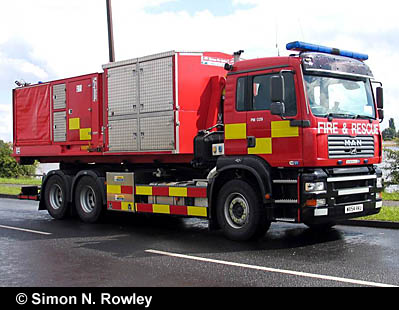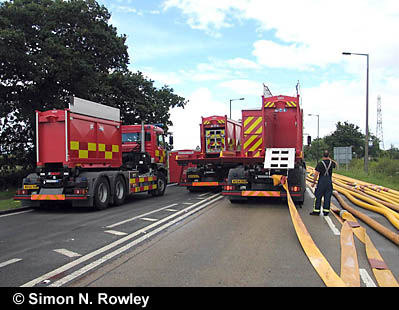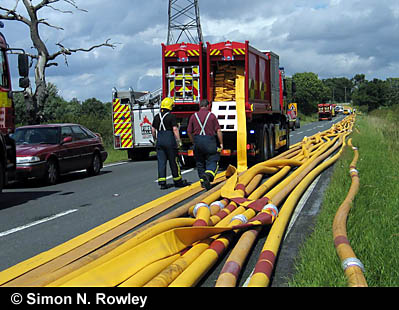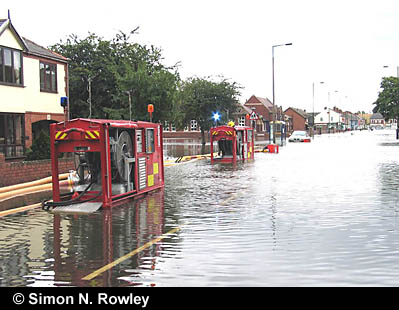
Fire service historian and author
Roger Mardon


www.romar.org.uk
© Copyright Roger Mardon
www.romar.org.uk
All rights reserved
Previous
Next
Although there isn't a river directly next to Toll Bar -

The main equipment in use was the New Dimension high volume pumping unit provided
as a national resource by Central Government's Department for Communities and Local
Government. There are 48 strategically positioned with fire & rescue services in
England and Wales and, as at 26 June, 27 had been deployed for the flood relief operation,
18 of them in South Yorkshire.

The vehicles are able to act as hose layers and the hose can be paid out from the back as the vehicle travels at up 25mph. The high volume pump modules have been dismounted from these vehicles and hose is laid from the pump to the discharge point.
As operations progressed new hose lines were laid by a Hampshire HVPU on top of the
existing lines to keep the obstructed road width to a minimum.


Each vehicle carries one demountable high volume pump and a demountable hose box
containing 1km of 150mm (6-